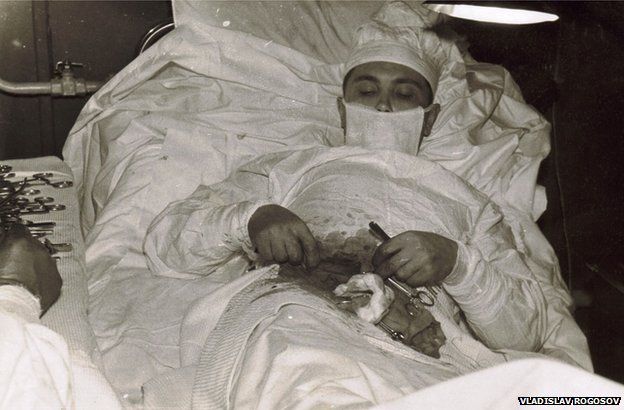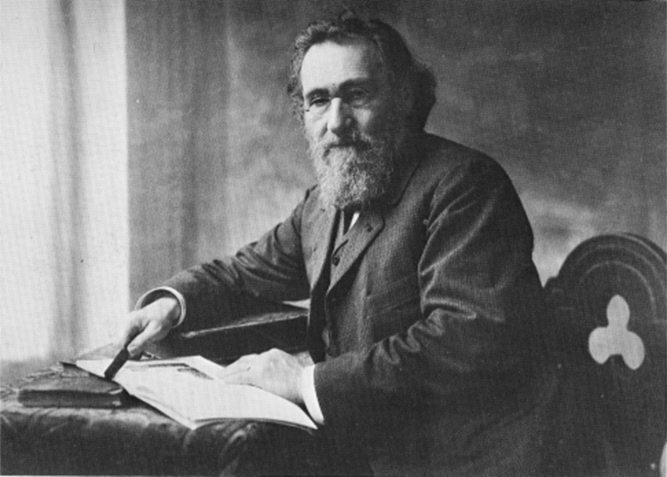Adolfo Lutz: More than just a historical figure in medicine, he stands as an emblem of unwavering dedication, groundbreaking innovation, and deep-seated love for humanity. Hailing from Brazil’s picturesque terrains, his life’s tale is fueled by a relentless quest for knowledge and a profound yearning to unravel the human body’s mysteries.
As a child, the diverse natural beauty of Brazil was his playground, possibly lighting the spark for his fascination with tropical medicine. It wasn’t merely about identifying ailments or prescribing remedies. It was a profound journey into understanding the intricate web between our surroundings, living creatures, and our health. And boy, was Lutz a maestro in discerning these intricate ties!
His academic pursuits weren’t confined to his homeland. From the lively lanes of Rio de Janeiro, he ventured to Europe’s revered academic institutions. But here’s the thing about Lutz: he wasn’t one to just skim through topics. He plunged into the depths, always searching not just for answers, but the right ones.

A pivotal part of his legacy revolves around entomology – yes, the study of those tiny insects. You might ponder, “How do these little creatures intersect with medicine?” In the tropical regions, the connection is monumental! Insects aren’t mere nuisances; they’re vehicles for numerous diseases. Grasping their role is vital in battling tropical diseases. Lutz’s painstaking work in this domain has been a beacon of hope for many and serves as a guiding light for current researchers.
But let’s not paint too rosy a picture. Lutz, like all trailblazers, encountered his fair share of storms. Be it scanty resources or doubting colleagues, the path was far from easy. Yet, Lutz’s spirit? Unbreakable. He was a man on a mission, and no hurdle was insurmountable for him.
In our modern era, where we often take medical progress as a given, pausing to remember pioneers like Adolfo Lutz is imperative. They didn’t possess today’s cutting-edge tech or abundant resources. Their arsenal? Sheer passion, a clear vision, and an ironclad commitment to the greater good.
Reflecting on Lutz’s illustrious life, it’s evident he wasn’t merely a scientist or physician. He was a dreamer, a groundbreaker, and most importantly, a beacon of humanity. His enduring legacy reaffirms that with heart, commitment, and a sprinkle of creativity, one can indeed shape the world.
Journeying Through the Tropics with Adolfo Lutz
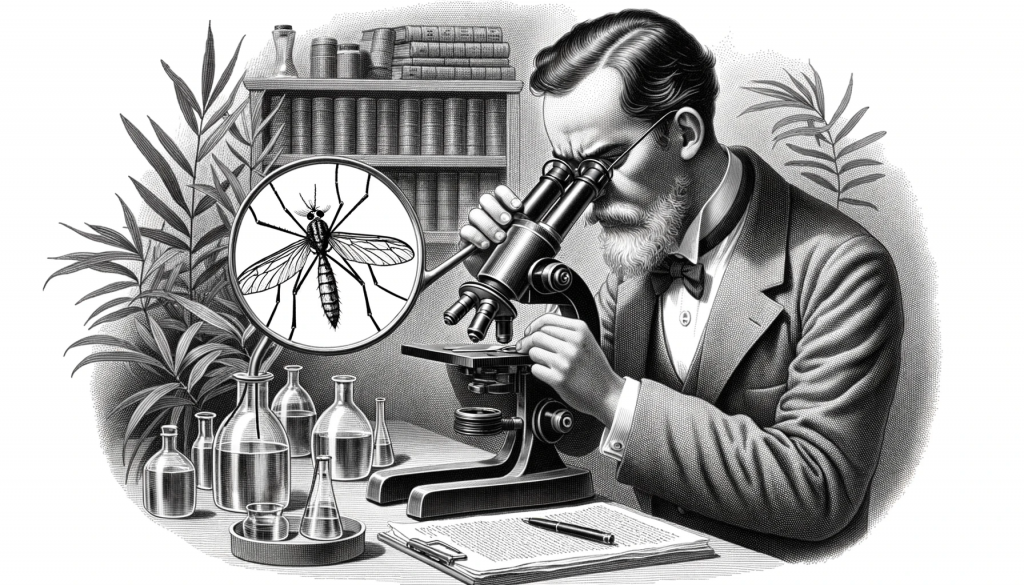
Imagine the vast, lush landscapes of Brazil, where the tropical climate is both a blessing and a challenge. It’s in this setting that Adolfo Lutz embarked on his trailblazing journey, reshaping our understanding of tropical diseases. His quest wasn’t just a scientific endeavor; it was a mission fueled by passion, curiosity, and a profound desire to alleviate human suffering.
The tropics, with their rich biodiversity, presented a unique set of challenges. Diseases that were relatively unheard of in temperate regions were rampant here. But Lutz wasn’t deterred. He saw these challenges as opportunities, chances to delve deeper into the mysteries of nature, and unravel the connections between the environment and human health.
His approach to tropical medicine was holistic. He believed in understanding the root causes, the vectors, and the environment that facilitated the spread of these ailments. This perspective led him to entomology, studying those tiny creatures that played a massive role in disease transmission. Mosquitoes, ticks, and other insects became the focal points of his research.
But here’s where Lutz’s genius truly shone. While many of his contemporaries were content with merely identifying these vectors, Lutz went a step further. He delved into their life cycles, their feeding habits, and their interactions with the environment. This comprehensive approach provided insights that were groundbreaking.
For instance, his work on mosquitoes revolutionized our understanding of diseases like malaria and yellow fever. He identified specific species responsible for transmission and highlighted the environmental conditions that facilitated their breeding. These findings were instrumental in devising strategies to combat these diseases.
But Lutz’s contributions didn’t stop at research. He was an educator, a mentor, and a beacon of hope for many budding scientists. His teachings transcended the walls of academic institutions. He believed in taking science to the masses, making them aware of the risks and the precautions.
His legacy is monumental. Today, as we reap the benefits of advanced medical interventions, it’s crucial to remember the pioneers like Adolfo Lutz. They worked with limited resources, faced immense challenges, and yet, their contributions have stood the test of time, benefiting millions.
In essence, Lutz’s journey in the realm of tropical medicine is a testament to human perseverance, ingenuity, and the undying spirit of inquiry. It’s a story that inspires, educates, and reminds us of the indomitable human spirit.
Unraveling Nature’s Tiny Mysteries: Adolfo Lutz’s Endeavors
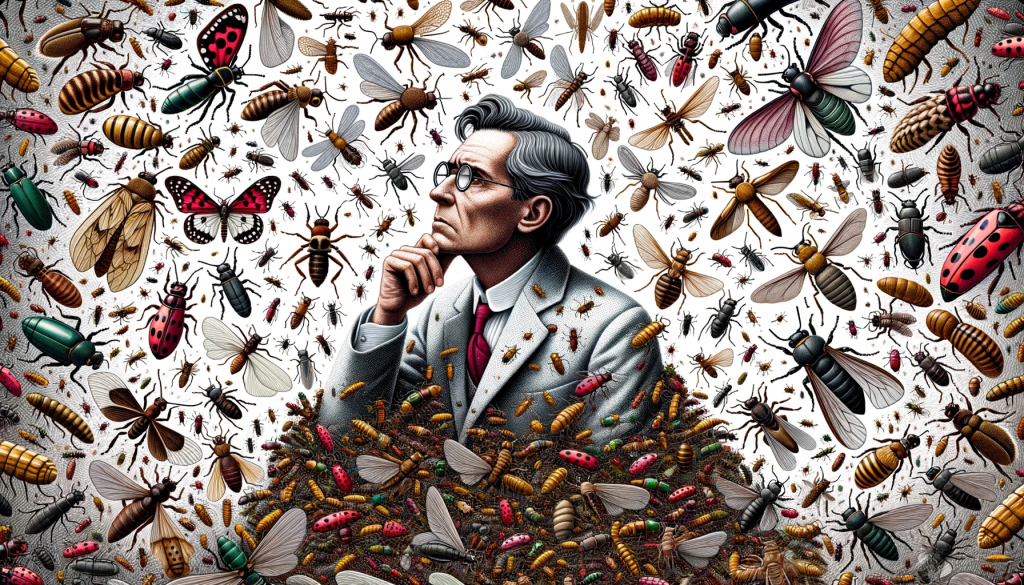
In the vast expanse of medical research, there are those figures who stand tall, not just for their academic achievements but for their ability to see beyond the obvious. Adolfo Lutz was one such luminary. His foray into the microscopic world of entomology and medical zoology illuminated paths previously uncharted.
Diving deep into the tropical terrains of Brazil, Lutz’s interests were piqued by the tiny creatures that buzzed and crawled around him. For many, these insects were mere annoyances, but for Lutz, they were gateways to understanding larger medical conundrums. His belief was simple yet profound: to tackle tropical diseases, one must first understand their carriers.
His work in entomology wasn’t confined to mere identification. Instead, Lutz embarked on exhaustive studies, understanding the life cycles, breeding habits, and feeding patterns of these insects. It was this holistic approach that led him to groundbreaking discoveries. He unveiled how certain species of mosquitoes were primary carriers for deadly diseases like malaria and yellow fever.
But Adolfo Lutz didn’t stop there. Recognizing the significance of these findings, he ventured into the realm of medical zoology. His studies encompassed a range of vectors, from ticks to fleas, each playing a unique role in the transmission of various diseases. Through meticulous research, Lutz was able to establish clear connections between these vectors and the diseases they carried.
One of the standout aspects of Lutz’s approach was his ability to communicate complex ideas with clarity. He didn’t rely on jargons or dense formulas. Instead, he painted vivid pictures, weaving tales of tiny creatures with massive impacts. It was this narrative style that made his findings accessible to both the scientific community and the general populace.
Beyond his research, Lutz was a beacon of inspiration. His work ethic, dedication, and insatiable curiosity became the gold standard for budding researchers. He demonstrated that with determination, even the tiniest of nature’s creations could unravel mysteries of colossal importance.
In the annals of medical history, Adolfo Lutz will always be remembered as the scientist who danced with insects, understanding their rhythms, and in the process, gifting humanity with invaluable insights.
Adolfo Lutz’s Pursuit of Truth in Yellow Fever’s Maze
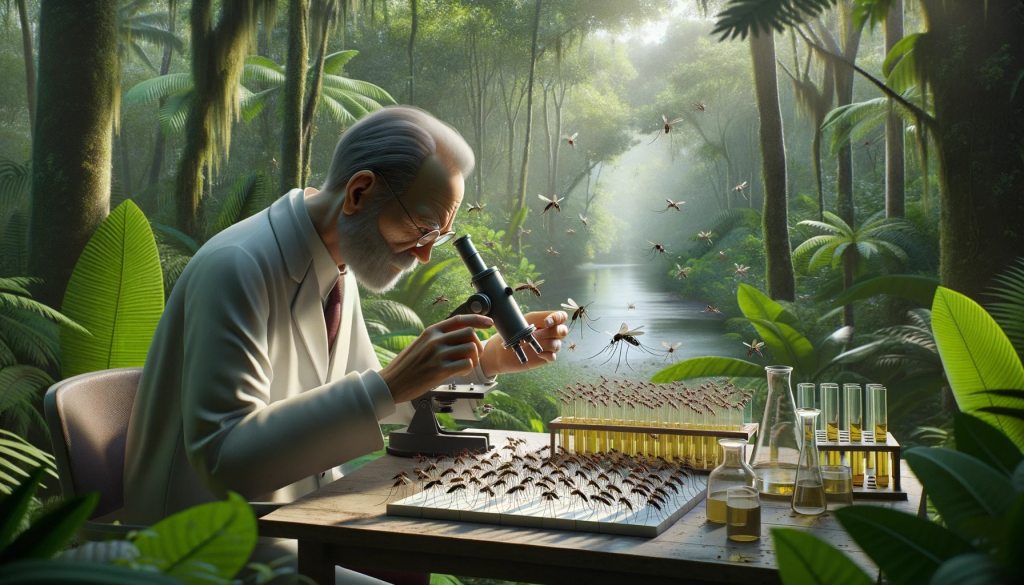
In the annals of medical breakthroughs, Adolfo Lutz stands as a beacon, illuminating paths where many had previously stumbled. His intense scrutiny and relentless research into yellow fever unveiled truths that were not just groundbreaking but life-saving.
Yellow fever, a dreaded malady, had puzzled scientists for ages. Its origins and transmission were enshrouded in mystery. Enter Adolfo Lutz, a man with a mission. He wasn’t content with surface-level knowledge; he wanted to dive deep into the heart of the enigma.
Lutz’s journey took him to the verdant rainforests of Brazil, the epicenter of numerous yellow fever outbreaks. Here, he meticulously studied the environment, the vectors, and the disease’s patterns. But it wasn’t a straightforward task. The tropical setting presented both opportunities and challenges, with its vast biodiversity offering potential clues but also adding layers of complexity.
His observations led him to a crucial realization: mosquitoes played a significant role in the transmission of this deadly disease. But it wasn’t just any mosquito; it was the Aedes aegypti. This revelation was monumental. It provided a clear direction for preventive measures and changed the way the world approached yellow fever.
Yet, Lutz wasn’t done. He wanted to understand the entire lifecycle of the disease. How did the virus sustain itself in nature? What were its natural reservoirs? His research pointed towards certain primate species as potential natural hosts, bridging the gaps in our understanding of the disease’s natural history.
However, Adolfo Lutz’s work wasn’t just about data and observations. It was imbued with a deep sense of purpose. He witnessed firsthand the devastation yellow fever brought upon communities, and he was determined to alleviate that suffering. His work wasn’t just for academic accolades; it was a heartfelt endeavor to save lives.
In the broader scope of medical research, Adolfo Lutz’s contributions to understanding yellow fever are a testament to the power of perseverance, keen observation, and a genuine desire to make a difference. His legacy is not just about the answers he found but also about the countless lives his discoveries saved.
Adolfo Lutz and the World of Leishmaniasis

Leishmaniasis is a disease caused by protozoan parasites of the genus Leishmania. Throughout history, many researchers have delved into its mysteries, but Adolfo Lutz stands out for his remarkable contributions.
Venturing into the heart of Brazil, Adolfo Lutz was among the first to connect the dots between sandflies and Leishmaniasis. It was not a straightforward journey, but his tenacity paved the way. As Lutz delved deeper, he found that these tiny sandflies, when infected, could transmit the Leishmania parasites to humans.
You might be wondering, “How did he figure this out?” Well, Lutz was not just about observation. He combined field studies with lab work, making cultures of the parasites. Through this, he revealed the life cycle of Leishmania. It’s kind of like piecing together a jigsaw puzzle, and Lutz had an eye for the tiniest of details.
Leishmaniasis manifests in different forms, and Lutz was particularly intrigued by the cutaneous form, where sores appear on the skin. He differentiated between the types based on clinical presentations. It’s like distinguishing apples from oranges based on their appearances and taste.
Now, onto the theorems. While I won’t drop any heavy formulas on you, let’s decode some of the science. Lutz theorized that the environment played a significant role in the transmission dynamics. It’s akin to understanding why certain plants grow in specific areas. Factors like humidity, temperature, and the presence of reservoir hosts all play a part.
Did Lutz introduce any specific statistical methods? Oh, absolutely! He employed epidemiological data to trace the spread and prevalence of the disease. Think of it as using patterns to predict the future, like how meteorologists forecast the weather.
In essence, Adolfo Lutz was not just a scientist; he was a detective in the realm of Leishmaniasis. His work laid the foundation for many future studies. His methods, insights, and sheer determination have left an indelible mark on the scientific community.
Spirochaetes and the Legacy of Adolfo Lutz

Adolfo Lutz was no ordinary researcher. His quest to understand Spirochaetal Infections took him to uncharted territories, both literally and figuratively. These infections are caused by spiral-shaped bacteria called Spirochaetes, and they’ve been a concern for many due to their impact on health.
Now, Lutz was curious. He wanted to know how these little spiral wonders operated. So, he embarked on a journey that would lead him to uncover some remarkable insights. Picture this: Lutz in his lab, surrounded by petri dishes, peering into a microscope, and there they are, the Spirochaetes, wiggling and wriggling, revealing their secrets.
No formulas here, but let’s break down the theorems. Lutz hypothesized that these bacteria had unique ways of evading the immune system. It’s kind of like a game of hide and seek, where the Spirochaetes are really good at hiding. And just like any mastermind, Lutz was determined to uncover their hiding spots.
One might wonder, did Lutz come up with any statistical tools during his research? Yes, he did! He delved deep into epidemiology, trying to understand the patterns and spread of these infections. Imagine a puzzle, and Lutz is placing each piece meticulously, looking at the bigger picture.
His dedication didn’t stop there. Lutz wanted to find solutions. He studied the bacteria, their life cycles, their favorite hosts, and so much more. Every discovery was like a eureka moment, adding another layer to the complex world of Spirochaetal Infections.
Skin Deep: Adolfo Lutz’s Journey in Dermatology

In the vast realm of medicine, the skin, our body’s largest organ, has always held its unique mysteries. Among those who sought to unlock these enigmas was Adolfo Lutz. His work in Dermatology wasn’t just about diagnosing rashes or prescribing ointments; it was about diving deep into the layers of the skin to understand its intricacies.
Lutz had an innate curiosity. He wasn’t content with just surface-level knowledge. He wanted to know why certain skin conditions occurred, what triggered them, and how they could be treated effectively. It was this drive that led him to explore various skin ailments, from the most common to the incredibly rare.
Now, you might be wondering, “What kind of theorems did Lutz propose?” Well, he believed that the environment played a crucial role in many skin conditions. Not in the way you’d think, like sunburn from UV rays, but more in-depth. Lutz theorized that certain environmental factors could exacerbate or even cause specific dermatological issues. It’s like how certain plants thrive in specific climates and wilt in others.
But Lutz didn’t stop at theories. He dived into the data. Using statistical methods, he tried to pinpoint patterns, trends, and anomalies in dermatological cases. Think of it like mapping out constellations in the night sky, trying to find connections between distant stars.
His relentless pursuit led to significant advancements in the field. Lutz explored treatments, studied the efficacy of various medications, and even delved into the genetic factors influencing skin conditions. His work was akin to a master painter, delicately crafting a masterpiece with each brushstroke.
Venom and Virtue: Adolfo Lutz’s Expedition

Adolfo Lutz was a man of unparalleled curiosity. When many shied away from the world of venomous creatures, Lutz stepped forward, eager to unlock the secrets they held. It wasn’t just about the thrill; it was about understanding these creatures, their venom, and the myriad ways they interacted with the human body.
Imagine this: Lutz in the wild, notebook in hand, observing a snake or a spider, trying to understand its behavior, its habitat, and the essence of its venom. It’s not an easy task, but for Lutz, it was a passion.
Now, onto the theorems. Lutz believed that venoms held potential beyond just harm. He theorized that if one could understand the composition of these venoms, they might offer insights into medical treatments and antidotes. Think of it like trying to understand a complex piece of music by breaking down each note.
Statistics? Oh yes, Lutz was meticulous. He collected data, analyzed patterns, and tried to understand the correlation between venom potency, animal behavior, and environmental factors. Imagine plotting a graph, where each dot represents a venomous bite or sting, and Lutz is trying to connect the dots.
His dedication to the study of venomous animals was nothing short of legendary. From understanding the intricate details of venom composition to exploring potential medical applications, Lutz was a pioneer. His work laid the foundation for many future studies, and his legacy continues to inspire researchers worldwide.
